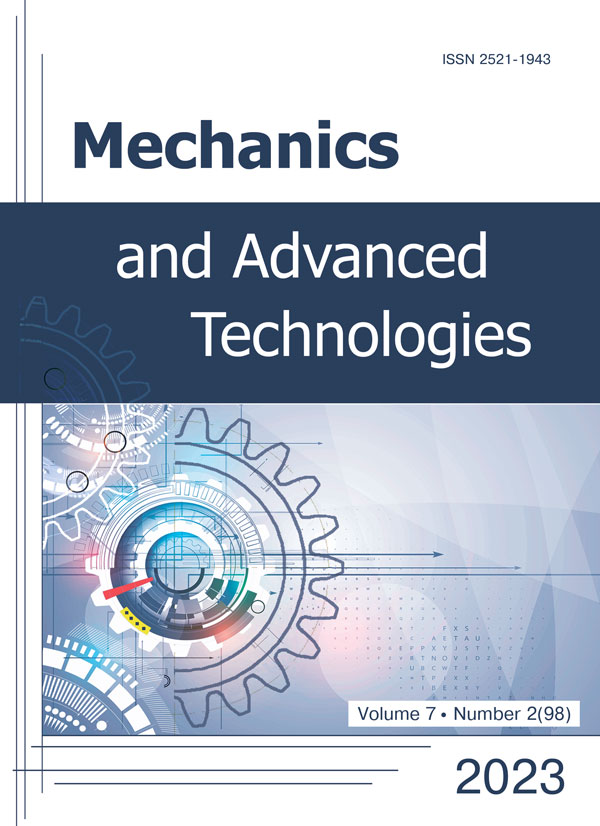Application of the geometric component of a product digital twin when studying its actual geometric parameters
DOI:
https://doi.org/10.20535/2521-1943.2023.7.2.288545Keywords:
aircraft, wing, production, geometric parameters, geometric models, assembly aircraft fixture, digital twinAbstract
The article analyzes the results of using the digital twin concept to study changes in the geometric parameters (GP) of an aircraft wing during its production. The concept of creating a product digital twin is put into practice by constructing geometric models of the wing console at each key stage of its manufacture. The main attention is focused on studying the change in the GP of the caisson part of the wing console at the following stages: assembling of consoles in an aircraft fixture, assembling of consoles out of an aircraft fixture and final assembling of an aircraft. It is concluded that the first significant changes in wing GP appear at the stage of removing the wing caisson from the aircraft fixture. It is shown that even with acceptable mold forming characteristics of the aircraft fixture, it does not ensure compliance of the actual wing GP with the design data within the permitted tolerances and cannot be a means of controlling GP. It is substantiated the necessity of implementing into a wing caisson manufacturing technological process a procedure for monitoring the geometric shape of the unit after its removal from an aircraft fixture. It is proposed for a comprehensive assessment of isolated units’ geometric parameters to use a digital model of the aircraft, which is formed at each stage of the product manufacturing based on executed models of the units’ actual surfaces.
References
- Michael Grieves, "Digital twin: manufacturing excellence through virtual factory replication", White paper, vol. 1, no. 2014, pp. 1-7, 2014. Available: https://www.researchgate.net/publication/275211047_Digital_Twin_Manufacturing_Excellence_through_Virtual_Factory_Replication.
- R. Rosen, G. von Wichert, G. Lo, K. D. Bettenhausen, “About The Importance of Autonomy and Digital Twins for the Future of Manufacturing”, IFAC-PapersOnLine, vol. 48, no. 3, pp. 567–572, 2015. DOI: https://doi.org/10.1016/j.ifacol.2015.06.141.
- Naoki Kikuchi, Tomohiro Fukuda and Nobuyoshi Yabuki, “Future landscape visualization using a city digital twin: integration of augmented reality and drones with implementation of 3D model-based occlusion handling”, Journal of Computational Design and Engineering, vol. 9, no. 2, pp. 837–856, 2022. DOI: https://doi.org/10.1093/jcde/qwac032.
- A. Y. Nezenko, Geometrical modeling in the processes of product life cycle: Author's abstract. Kyiv, 2019, 24 p.
- V. Vanin, A. Nezenko and S. Kozlov, “Approach to the formation of geometric models of a digital double at the production stage”, Modern problems of modeling, no. 22, pp. 3–11, 2021. DOI: https://doi.org/10.33842/22195203/2021/22/3/11.
- A. Nezenko, S. Kozlov and V. Vanin, “The method of constructing the actual surfaces of the aircraft wing in the process of its manufacture and operation”, Modern problems of modeling, no. 25, pp. 158–168, 2023. DOI: https://doi.org/10.33842/2313-125X-2023-25-158-168.
- S. O. Kozlov, “The method of determining the actual angles of setting the plane wing sections at the production stages”, in Collection of reports of the 9th All-Ukrainian scientific and practical conference of students, postgraduates and young scientists "Applied geometry, design, objects of intellectual property and innovative activity of students and young scientists". Kyiv, Ukraine, 2020, pp. 11–15.
Downloads
Published
How to Cite
Issue
Section
License
Copyright (c) 2023 Sergey Kozlov, Volodymyr Vanin

This work is licensed under a Creative Commons Attribution 4.0 International License.
Authors who publish with this journal agree to the following terms:
- Authors retain copyright and grant the journal right of first publication with the work simultaneously licensed under CC BY 4.0 that allows others to share the work with an acknowledgement of the work's authorship and initial publication in this journal.
- Authors are able to enter into separate, additional contractual arrangements for the non-exclusive distribution of the journal's published version of the work (e.g., post it to an institutional repository or publish it in a book), with an acknowledgement of its initial publication in this journal.
- Authors are permitted and encouraged to post their work online (e.g., in institutional repositories or on their website) prior to and during the submission process, as it can lead to productive exchanges, as well as earlier and greater citation of published work











